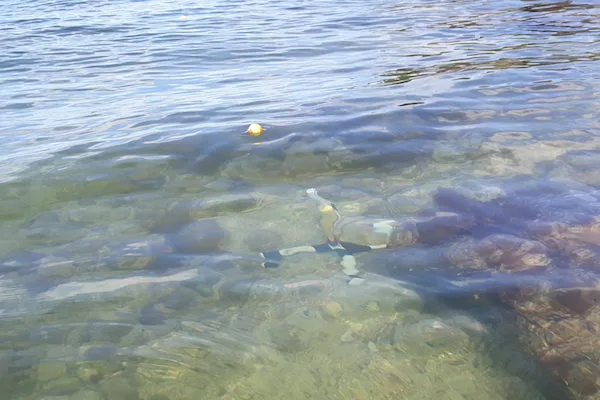In July of 2019, Tori Tomiczek and Anna Wargula, assistant professors at the United States Naval Academy’s Department of Naval Architecture and Ocean Engineering in Annapolis, Maryland, USA, mounted RBRsolo³ D depth loggers to the roots of mangroves in Key West, Florida, to determine the transmission of boat wakes through the saltwater-inundated trees. Their work will help to better quantify the role of mangroves in dissipating wave energy and in protecting coasts from damage due to waves and storm surge.
Tomiczek and Wargula rented kayaks, paddled into the mangroves in Key West, Florida, and deployed three RBR depth loggers to study the transmission boat wakes, a major source of coastal erosion, through the root structures of mangroves.
They mounted one RBRsolo³ D to a PVC tetrapod with fishing weights and sat it in the sediment on the seaward side of a small island in the area forested by red mangroves. A second RBRsolo³ D was lashed to the roots of a mangrove tree on the sheltered side of the island, about 10 m inland, and the third RBRsolo³ D was positioned midway between the two sensors. Tomiczek says the RBRsolo³ Ds are “so small and manageable”: she and Wargula easily deployed and adjusted the instruments from their kayaks. Over five days, they noted the times of boat passings, to later match with the wakes produced and waves passing through the mangroves. Over three days of measurement, they recorded about 200 wakes. Their initial analysis shows a decrease in boat wake wave height by about 40 to 60% through 10 m of red mangrove forest.
Mangroves are the only trees that can live with their roots in saltwater. The red mangrove’s roots, in particular extend from the base of the tree, arching over the water then diving underwater to stabilize the tree with a dense and wide base of roots in the sediment. Part of the root structure of red mangroves is underwater through the full tidal cycle. It is the dense root structures that allow mangroves to support the accumulation of sediment at their base and to effectively dissipate wave energy.
After 2017’s Hurricane Irma, Tomiczek participated in a damage assessment in the Florida Keys during which Tomiczek says they observed “a very striking protection by mangroves.” Residential houses behind mangroves extending just a “half a football field” were less damaged than those behind traditional human-made protections, such as bulkheads and seawalls. “That got us interested in understanding how mangroves can interact with waves; how they cause waves to lose energy.”
Building on their work, Tomiczek and Wargula seek to quantify what protections are afforded by a given extent of mangroves. Partnering with the U.S. Army Corps of Engineers in Vicksburg, Mississippi, the professors have developed a one to two-scale model, where they plan to reproduce the boat wake study and then begin looking at other wave conditions and variables, such as sediment and slope.
Ultimately, Tomiczek and Wargula want to provide data that would allow for a direct comparison of coastal protection provided between mangroves and human-built structures. Wargula explains that current data sets describing the protections afforded by hardened structures exist, but wave and storm surge mitigation through marshes and mangrove forests has yet to be well-quantified.
Using mangroves to protect coasts also has environmental benefits. Tomiczek says that protecting coasts by planting mangroves is a way to leverage nature and may be a solution “that also stores carbon and provides a habitat for wildlife.”
In summer 2021, Tomiczek and Wargula plan to deploy their loggers over a longer period, throughout the hurricane season, to look at the transmission of waves with different characteristics. In this case, larger wavelengths are accompanied by storm surge, which are produced by hurricane-strength off-shore winds.
Find out more about the RBRsolo³ D and RBR’s Compact Tide and Wave Sensors, or contact our sales team.
